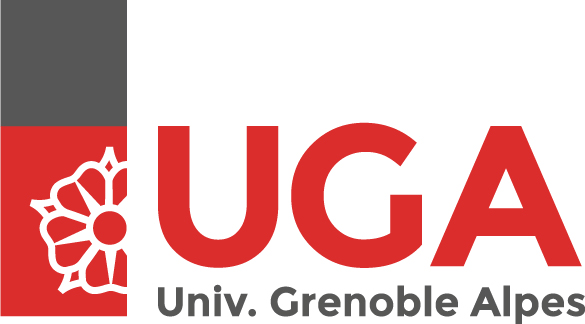Number theory and algebraic geometry are two domains of mathematics linked by many fructuous interactions. For example, one can not progress in the study of the solutions with integral coordinates of polynomial equations without understanding the geometry of the varieties defined by these equations.
The proposed courses form an introduction to these wide and very active fields in Mathematics, with minimal prerequisite essentially limited to basic notions in algebra.
Introductory course: Algebraic number theory (S. Checcoli)
Description
Algebraic number theory studies algebraic numbers (i.e., complex numbers that are roots of polynomials with integer coefficients) using techniques and tools from algebra.
Its origins probably go back to the work of Gauss, Eisenstein, Jacobi and its development over the centuries, under the impulse of Dirichlet, Dedkind, Hilbert and many others, is motivated by the study of some important problems in number theory, such as generalizations of the quadratic reciprocity law or the famous Fermat’s last theorem.
Algebraic number theory has now become one of the essential areas of number theory, with applications ranging from diophantine geometry, factorization of integers, primality tests, and transcendence theory, but it has also enriched on its way many other fields of mathematics. For example, the search for general formulas for roots of polynomials has been a powerful source for the development of group theory, thanks to the work of Ruffini, Abel, up to the magnificent Galois theory.
This course aims to study number fields which are extensions of finite degree of the field of rational numbers, the structure of their ring of integers and its prime ideals (ramification theory) and their completions with respect to archimedean and non-archimedean valuations (the theory of p-adic fields). We will start by recalling several tools from Galois theory (for finite and infinite extensions) and, if time allows, we will end the course with an introduction to the theory of heights.
Program
- Algebraic extensions : reminders on algebraic and finite extensions of fields, existence and uniqueness of an algebraic closure, extensions of homomorphisms with values in an algebraically closed fields, primitive element theorem.
- Galois theory: reminders on Galois extensions, Galois correspondence, inverse Galois problem and examples, solvability by radicals and solvable groups, infinite Galois extensions.
- p-adic fields: Ostrowski’s theorem, local degrees, local norms, Krasner’s lemma, classification of unramified and tamely ramified extensions of a p-adic field, wild ramification, Galois extensions of p-adic fields and their structure, ramification groups: structure and jumps.
- Complements: Chebotarev density theorem and applications. Shafarevich theorem on the “local” realisability of p-groups. Introduction to the Weil height.
Prerequisites
Theory of finite groups; theory of field extensions; number fields: structure, ring of integers and prime ideals, valuation theory over a number fields; basic notions in Galois theory.
Bibliography
- J.W.S. Cassels and A. Frohlich (eds.), Algebraic Number Theory, Academic Press 1967.
- S. Lang, Algebra, 3rd Edition, Addison Wesley, 1993.
- S. Lang, Algebraic Number Theory, 2nd Edition, Springer Verlag 1994.
- W. Narkiewicz, Elementary and analytic theory of algebraic numbers, Springer Monographs in Mathematics (3 ed.), Berlin: Springer-Verlag, 2004.
- J. Neukirch, Class Field Theory, Springer Verlag, 1986.
- J-P. Serre, Topics in Galois Theory, Jones and Bartlett Publishers, 1992.
- J-P. Serre, Local fields, Springer Verlag 1979.
Class hours: Fridays 09:15-12:15, 13:30-15:00, room S06.
Introductory course: Arithmetics under the influence of Geometry (E. Peyre)
Description
Exhibiting strange relations between integers is as old as the notion of numbers. The fermat equation \[X^p+Y^p=Z^p\] has fascinated many would-be mathematicians for 300 years. With computers, it is possible to get quite surprising relations like \[95800^4 + 217519^4 + 414560^4 = 422481^4\] or \[2682440^4 + 15365639^4 + 18796760^4 = 20615673^4\] with which Noam Elkies disproved a long standing conjecture of Euler.
Therefore one would like to have criteria to determine from an explicit system of polynomial equations with integer coefficients:
- Whether the system has solutions with integer coordinates;
- Whether it has infinitely many solutions;
- How many such solution one may find with coordinates smaller than a real number B.
The first question is known as Hilbert’s tenth problem. It was proven to be not solvable by Matiyasevich: no algorithm can determine in finite time whether a system of polynomial equations is solvable over the integers.
On the bright side, it turned out that the set of solutions was under the influence of the geometry of the complex variety defined by the same equations. One of the most famous result in that direction is a theorem of Faltings: A complex curve may be seen as an oriented real surface which is classified up to homeomorphism by a topological invariant: its genus. If the genus of a curve is bigger or equal to two, there exists only a finite numbers of points with rational coordinates on the curve. So the nature of the set of solutions is ruled by purely geometric invariants.
In higher dimensions, the situation is more complicated but similar phenomena are expected to be true.
The objective of these lectures is to present the tools of arithmetic geometry which provide the link between the arithmetic setting and the geometry, including projective varieties, line bundles, heights,\dots We shall illustrate these notions on various examples explaining also techniques to produce solutions and to count them.
As an example, the figure below displays points with rational coordinates on the surface given by the equation \[Y^2+Z^2=X^3-X.\]

Program
- Classical examples;
- Projective setting;
- Heights;
- Northcott’s theorem;
- Line bundles; Picard group;
- Conics and cubics;
- Law group on elliptic curves;
- Mordell-Weil’s theorem;
- Statement of Falting’s theorem;
- Higher dimension, Lang’s conjectures;
- Varieties with many points.
References
- J.-P. Serre, Lectures on the Mordell-Weil theorem, 3rd edition, Aspects of Math, Springer Fachmedien Wiesbaden (1997).
- G. Cornell, J. H. Silverman, Arithmetic Geometry, Springer Verlag (1986).
- S. Lang, Number theory III: Diophantine Geometry, Encyclopaedia of Math. Sciences \textbf{60}, Springer Verlag (1991).
Prerequisite
Notions of algebra (groups, rings, algebras, polynomials in several variables) topology (topological space, compacity) and differential geometry (partial derivatives, jacobian matrix, tangent space).
Class hours: Tuesdays 09:00-12:15, 13:45-15:15, room 16.
Introductory course: An introduction to algebraic geometry (J. Fasel)
Description
Algebraic geometry is roughly the study of objects obtained as solutions of system of polynomials, combining geometric intuition and algebraic methods. It is one of the richest and most interesting field of mathematics, having connections with diverse branches such as topology and number theory. Its successes are manifold, including among other the proof of Fermat s conjecture by Wiles or the proof of Weil's conjectures by Deligne and Grothendieck.
The goal of this course is to provide solid ground for the more advanced notions in algebraic geometry. In the first part, we will focus on affine schemes. We will introduce the Zariski topology and study its behaviour under ring homomorphisms, focusing on localizations and quotient by ideals. We will then briefly discuss the notion of sheaf on a topological space before turning to the notions of scheme and morphism of schemes. In the second part, we will study more specific properties of morphisms and useful constructions such as the fiber product. We will also spend a fair amount of time on the notion of point. Time permitting, we will introduce the Chow groups associated to a scheme.
Program
- Affine schemes, Zariski topology.
- Schemes and their properties, points.
- Functorial behaviour.
References
- R. Hartshorne, Algebraic geometry, Graduate texts in mathematics, Springer-Verlag, Berlin, New York (1977).
- R. Vakil, Foundations of algebraic geometry, available online.
Prerequisite
Basic notions in commutative algebra.
Class hours : Wednesdays 08:30-11:45, 13:45-15:15, room S06.
Advanced Course - Diophantine Approximation for values of special functions (T. Rivoal)
Description,
This course will be devoted to the Diophantine properties of the values taken at algebraic points by certain special functions. The question is to decide whether or not such a function takes an irrational value (or more generally a transcendental value) at a rational point or an algebraic point. Roughly speaking, a special function is a power series solution of a linear differential equation with coefficients in Q(z), or more generally a solution of some linear functional equation. The most classical examples of special functions are the hypergeometric series, amongst which we find exp(z) et log(1-z).
In the first part of the course, we will first review a few basic results and constructions of Diophantine Approximation. We will then be interested in certain “explicit” constructions based on Hermite-Padé approximants. These constructions enable to show that exp(α) is a transcendental number (ie, not an algebraic number) for every non zero algebraic number α, from which we deduce the transcendence log(α) for every algebraic number α different of 0 and 1. We will also apply this type of constructions to the polylogarithmic functions \(\sum_{n=1}^\infty z^n/n^s\) that generalize log(1-z). Important corollaries will be obtained concerning the Riemann zeta function, such as the irrationality of ζ(3).
In the second part of the course, we will generalize the previous theorems to larger classes of functions, including E-functions (that generalize $\exp(z)$) and G-functions (that generalize log(1+z)); the underlying constructions, based on Siegel’s lemma, are now “inexplicit”. The differential equations satisfied by these functions are crucial and the results are fundamentaly different from one class of functions to the other.
At last, depending on time available, we will study the Diophantine properties of Mahlerian functions. These functions are solutions of a functional equation of the form \(\sum_{j=0}^d a_{j+1}(z)F(z^{k^j})+a_0(z)=0\) with \(a_j(z)\in \mathbf Q(z)\). A classical example is \(F(z)=\sum_{n=0}^\infty z^{k^n}\) (k⩾2 an integer) solution of \(F(z^k)=F(z)-z\), and it will be shown that it takes transcendental values at all algebraic points z such that \(0<|z|<1.\). More generally, we will show a result due to Mahler, on the transcendence of the values of these functions, where fonctionnal equations play a fundamental role similar to differential equations for E-and G-functions.
Prerequisite
It will be useful to attend the introductory courses in number theory proposed during the first term by Sara Checcoli and Emmanuel Peyre.
Program
- Generalities on Diophantine Approximation
- Transcendence at algebraic points of exp(z) and log(z).
- Linear independence of values of polylogarithms, and applications to the values of the Riemann zeta function.
- Gel'fond-Schneider's Theorem.
- Siegel-Shidlovkii's Theorem for E-functions.
- Chudnovsky's Theorem for G-functions.
- Mahler's Theorem for Mahlerian functions.
References
- A. Baker, Transcendental number theory, Cambridge University Press, coll. Cambridge Mathematical Library (1990).
- A. Shidlovskii, Transcendental Numbers, Studies in Math 12, de Gruyter (1987).
- K. Nishioka, Mahler Functions and Transcendence, Lecture Notes in Mathematics 1631 (1996).
Advanced course: Grassmannians and Enumerative Geometry (J. Guéré)
Description
The projective space classifies all lines in the affine space. It admits a generalization, called the Grassmannian Gr(k,n), which classifies all subvector spaces of dimension k inside a given vector space of dimension n>k. We prove it is a variety of dimension \(\binom{n}{k}\) and it plays a crucial role in algebraic geometry.
Enumerative geometry focuses on counting problems for some objects satisfying special conditions. For instance, in the Grassmannian Gr(k,n), if we look at all subvector spaces containing a given line, we get a subvariety of Gr(k,n). When sufficiently many constraints of this sort are imposed, the resulting subvariety can be zero-dimensional. Hence, it means it is a collection of points and we can count them. For instance, the number of lines in the plane meeting at two given points is just 1, so is the number of quadrics meeting at five general points.
In this course, we aim at counting how many lines there are on a smooth cubic complex surface. For this reason, we will investigate the geometry of the Grassmannian, compute its Chow ring, and work out what is now called Schubert calculus.
Program
- Preliminaries on Chow rings and the example of the projective space
- Introduction to Grassmannians and Schubert calculus
- The cubic surface and its lines
References
- D. Eisenbud and J. Harris 3264 and All That, Intersection Theory in Algebraic Geometry, Cambridge University Press (2016). The whole book is available online
Prerequisite
An introduction to algebraic geometry

